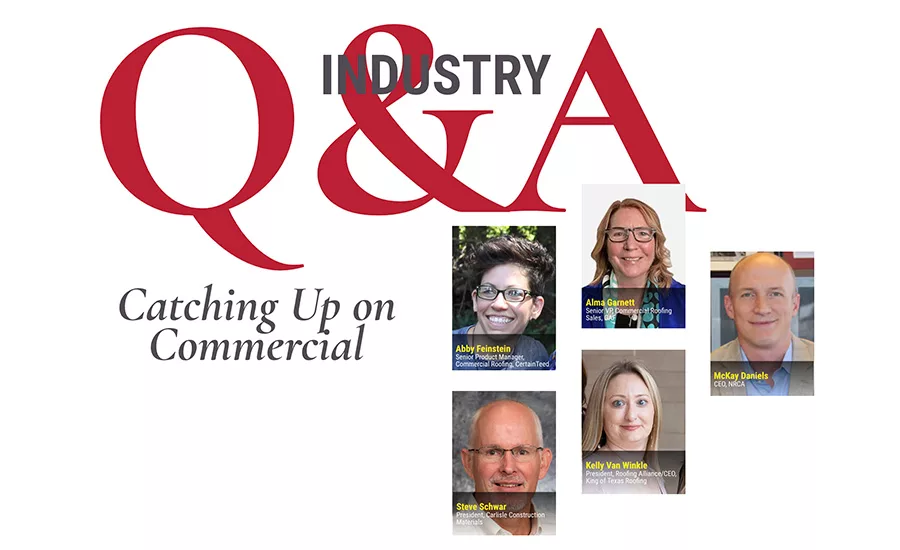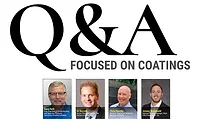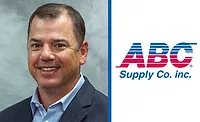Roofing Industry Q&A: Catching Up on Commercial

In roofing circles, commercial contractors may have been hardest hit by the COVID-19 pandemic and supply-chain crisis that ensued. Project delays and price volatility — largely due to unparalleled shortages in raw materials and transportation challenges — extended well into this year and are threatening 2023.
Roofers are learning to adapt quickly and are leaning on their partners in new ways to stave off project postponements and maximize efficiency on the jobs they can complete. RC recently checked in with industry leaders in the commercial roofing space, and here’s what they told us about where the market is at, and what to expect for the rest of this year.
RC: What is the state of commercial roofing?
Steve Schwar, president, Carlisle Construction Materials (SS): Improving. We're far from a normal environment but it's gradually improving. There are still hiccups … and we've gotten battered and bruised through this process, but there's a light at the end of the tunnel. I think we're coming out of it from a supply perspective. Inflation, though, is not going away. It's here and there’s no sign of that weakening.
Abby Feinstein, senior product manager, commercial roofing, CertainTeed (AF): The commercial roofing industry has proven to be resilient over the past two years and has experienced an increase in sales in spite of pandemic-induced challenges, including supply chain delays and labor shortages. About 52% of roofing contractors reported that sales had improved at the end of 2021, and that growth was maintained in the first half of this year. This upward trajectory is expected to continue as global roofing sales are projected to reach $101.9 billion by 2027.
Two things will remain paramount, given this forecast: Building the labor workforce, and providing more time-saving and out-of-the-box solutions to increase productivity on the jobsite. The need for these innovative, reliable products has never been greater given the industry-wide labor and material shortage.
McKay Daniels, CEO, National Roofing Contractors Association (MD): The challenges that our members and the industry are facing are largely unprecedented. Issues that have been long standing are there but are now on steroids. The industry is robust, and our contractors continue to solve problems every day, and that’s really remarkable to see. But folks are tired. You can hear it in their tone, in their demeanor.
We’re definitely not monolithic. Commercial is having a tougher time than residential as is the nature of the roofing system. If you’re missing one component you don’t have a roof system so the complexity of it doesn’t help.
Alma Garnett, senior vice president, commercial roofing sales, GAF (AG): We’re in a real boom time for the industry right now. Some of that is typically following a big increase in home building. You need the schools, malls and warehouses around all that. Now that really slowed during the pandemic, but the backlog of reroofing in the public sector is off the charts. That’s why there’s a focus and almost frenzy of demand in commercial roofing. I’ve seen the booms and busts in the industry and this has all the earmarks of a really nice, long-term healthy demand for commercial, low-slope roofing.
RC: Demand is strong despite persistent challenges in the commercial market. How is your organization helping roofing contractors right now?
AF: We have to ensure the products in high-demand are readily available for our customers. As such, our immediate focus is on the low visibility, but critical elements: purchasing, operational and logistics efficiencies to ensure our customers can receive in-demand products when they need them. No one has escaped the impact of inflation but, in addition to availability, we’re working on innovative and sustainable solutions that will translate to cost savings, or at minimum, cost-increase avoidance, which would be reflected in price.
SS: Through COVID-19 we've had to learn how to stay engaged in the marketplace. And just recently, the face-to-face training activities have really, really ramped up. Last month alone we had over 1,000 face-to-face training activities with contractors, architects, employees, distributors … and we developed some new techniques with how to train at our training and education center.
We're doing virtual training live, so we can conduct training in our center and broadcast that to a specific crew — either on a rooftop or in a contractor’s yard. With their cameras on their phones, we’re able to see how they're installing product and give them feedback immediately.
MD: Emphasizing the importance of good legal counsel. Getting good advice on the front end is important. It’s really an ounce of prevention is a pound of cure. Having strong contracts with expectations up front, and any escalation clauses or delay provisions is key. In general, drama or conflict comes from lack of clarity. A well-structured contract for a contractor is important, and constant communication with the customer upward on the food chain is critically important.
AG: It’s about transparency and information flow. Information is critical, the lack of it is stressful and good information relieves stress. The contractors need information, they need responsiveness, and they need to be able to trust and count on their manufacturers to deliver. It’s simple, but not easy.
RC: For manufacturers: Who is your ideal commercial roofing customer?
AF: Historically, CertainTeed has had a strong following from small to medium-sized roofing contractors. They love our products, yes, but equally, if not more importantly, they’ve come to rely on our service level. For similar reasons, in recent years we’ve started to see an uptick in attention from large, “tier-one” roofing contractors. The labor shortage is real, and these outfits are constantly bringing in new recruits that need to be trained. We put a great focus on both digital, on-demand and live applicator training and it’s been very well received.
SS: So we have multiple brands that attract to a wide variety of contractors and I think we get good market penetration by having a multiple brand strategy. We do tie in nicely with contractors who are invested in their marketplace, who are interested in training and talent development, and making sure that they have the most innovative products available in the marketplace. We have a pretty wide customer base across the commercial roofing space.
AG: In my view, all customers are created equal and the rest is up to us. A contractor connected to their customer who does quality work and is respectful of the relationship with manufacturer will always be anyone’s ideal client. You want to create a family in commercial roofing, a family of contractors that supports your brand.
RC: Many companies are ramping up their commercial roofing footprint, do you feel a target on your back?
SS: I've been in the business since 1984, and we've had a target on our back for decades. What I'd say is that our focus is internal. Of course we're going to watch what the competition is doing, but we can only control what we do. So our focus is on execution, our focus is on innovation, our focus is on talent development and really trying to make sure that the Carlisle experience is the best in the marketplace. The best in the business.
AG: We’ve hit the ground running this year with newly-infused energy, capital, and the ability to create a five-year plan and become the leader. The leader doesn’t always mean the biggest, it means the easiest to do business with, the most dedicated to operational excellence and service. That’s the leader in this industry.
RC: What has you worried?
MD: Inventory and labor. Normally, manufacturing would build inventory when demand surges in the summer, but we don’t have that inventory this year. There are genuine concerns for projects that have to hit a relatively narrow window to complete. There are some white-knuckle moments now and in the months ahead.
Kelly Van Winkle, president, Roofing Alliance/CEO, King of Texas Roofing (KVW): The state of the commercial roofing industry is like nothing we have seen in the 40 years our company has been in business. Unstable prices and extended deliveries are making it very difficult to meet the needs of clients.
RC: What are you optimistic about going forward?
AF: We’re truly excited about the future of commercial roofing and driving advancements that will transform the industry and help save our planet. We look forward to introducing more sustainable practices both within product development and how we retain product materials in renovations and reconstructions. We’re eager to provide our clients with products that are effective, reliable and eco-conscious, and, we’re looking forward to being part of an industry that’s committed to sustainability and paving the way toward greener building practices in a way that we’ve not seen before.
SS: The commercial roofing industry has been resilient through the years and there’s clearly some global economic challenges in the headlines that I don’t think we’ll be immune to. But based on the inventory of buildings that exists in this country and in North America, I think if the roofing market is impacted, it'll rebound quickly.
There are an awful lot of buildings out there, the new construction environment continues to look healthy — architects are busy. So, if you look out a year, things look okay for the commercial roofing space, and I continue to be optimistic, despite what we hear in the news.
KVW: My goals for the (Roofing) Alliance include continuing to promote the vast array of meaningful philanthropic and educational programs already in place, as well as incorporating fresh, new ideas that our growing membership is bringing forward.
AG: The big thing that I see shifting, which is a positive for the industry, is that this crisis has engendered planning abilities back into our industry. We’re now in an environment where the roofing contractor has to plan, the general contractor has to plan with their subs, and we’re much more in the driver’s seat in terms of the supply chain than we have been in a while.
Looking for a reprint of this article?
From high-res PDFs to custom plaques, order your copy today!






